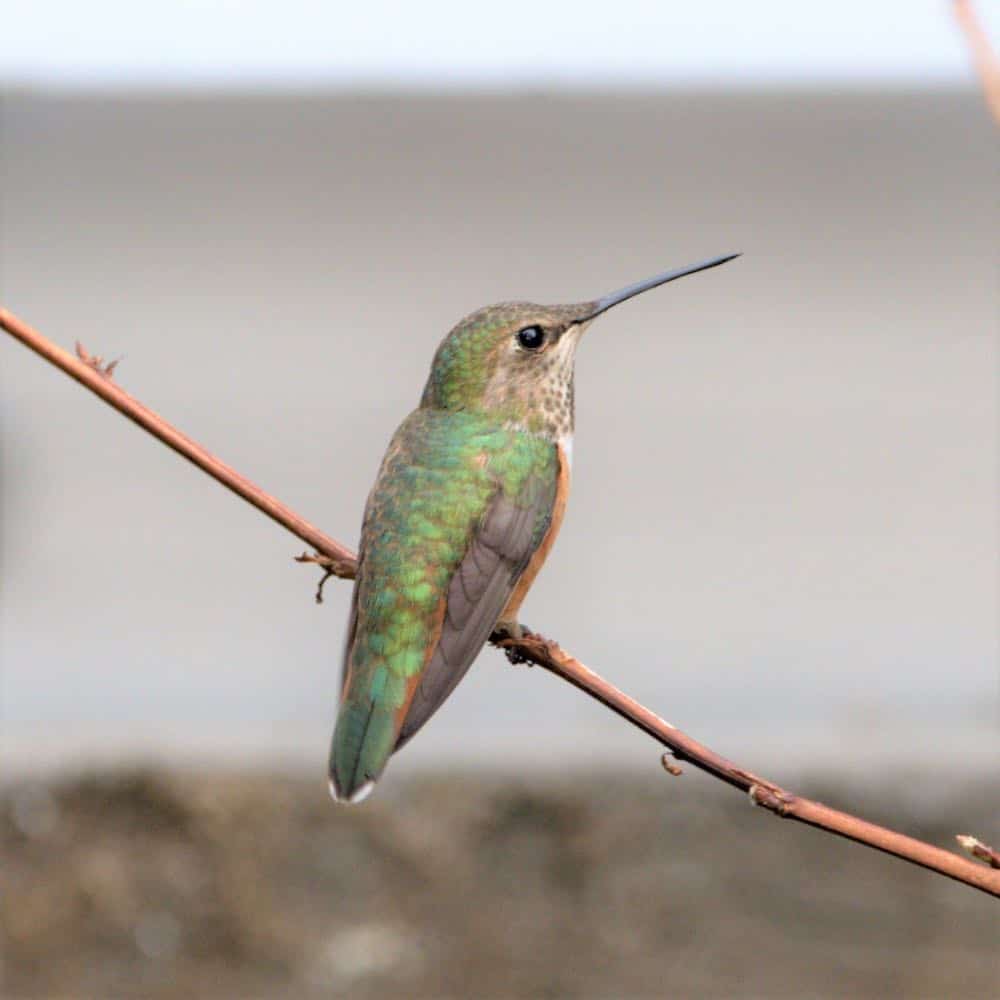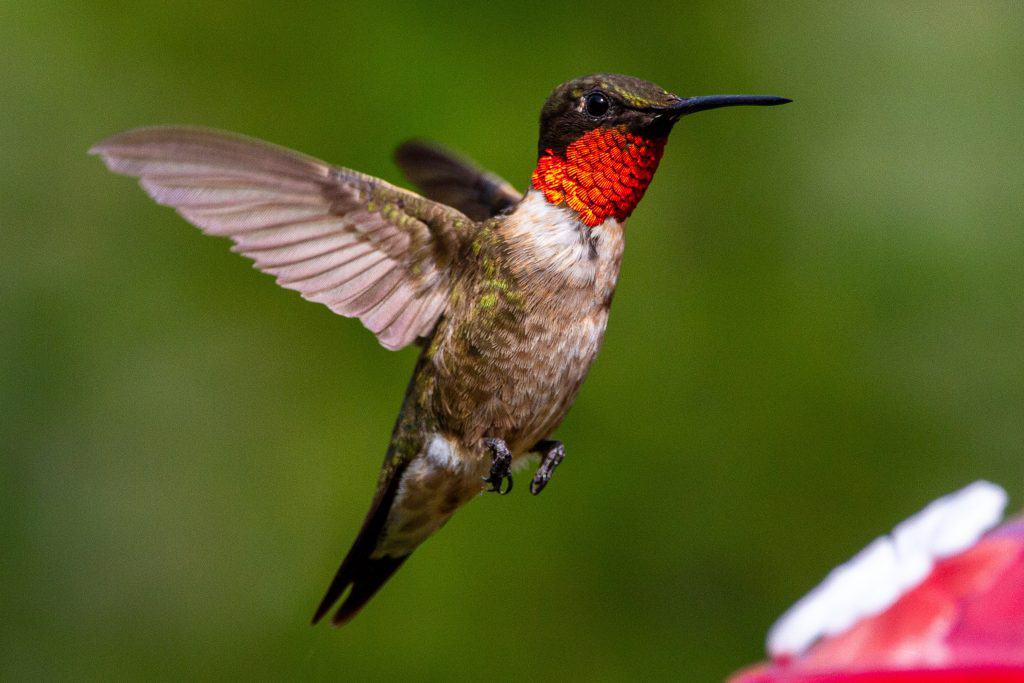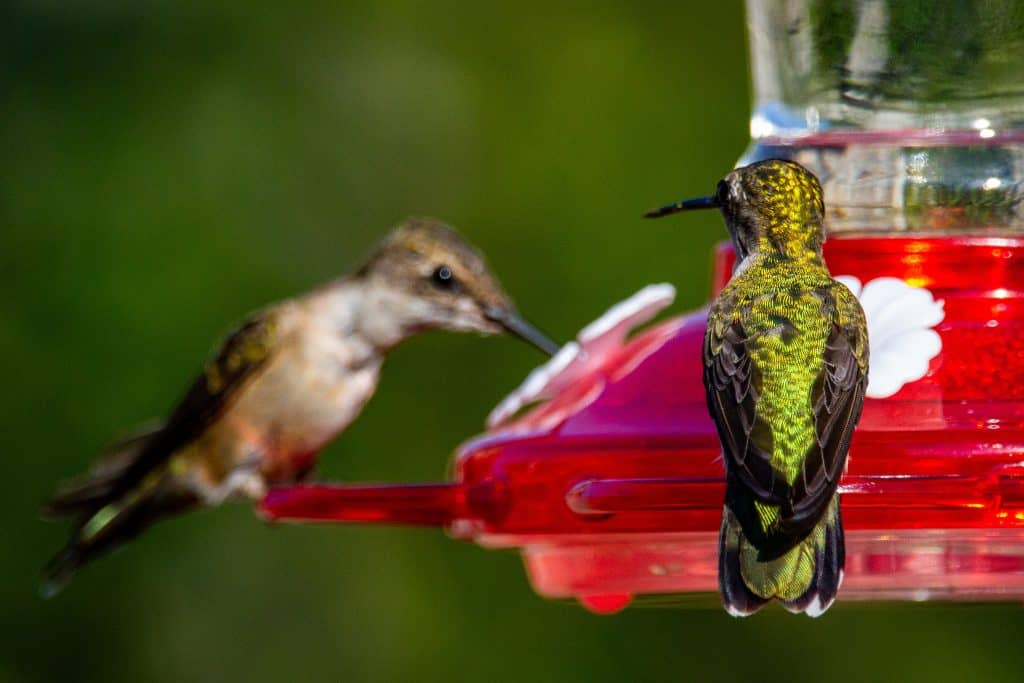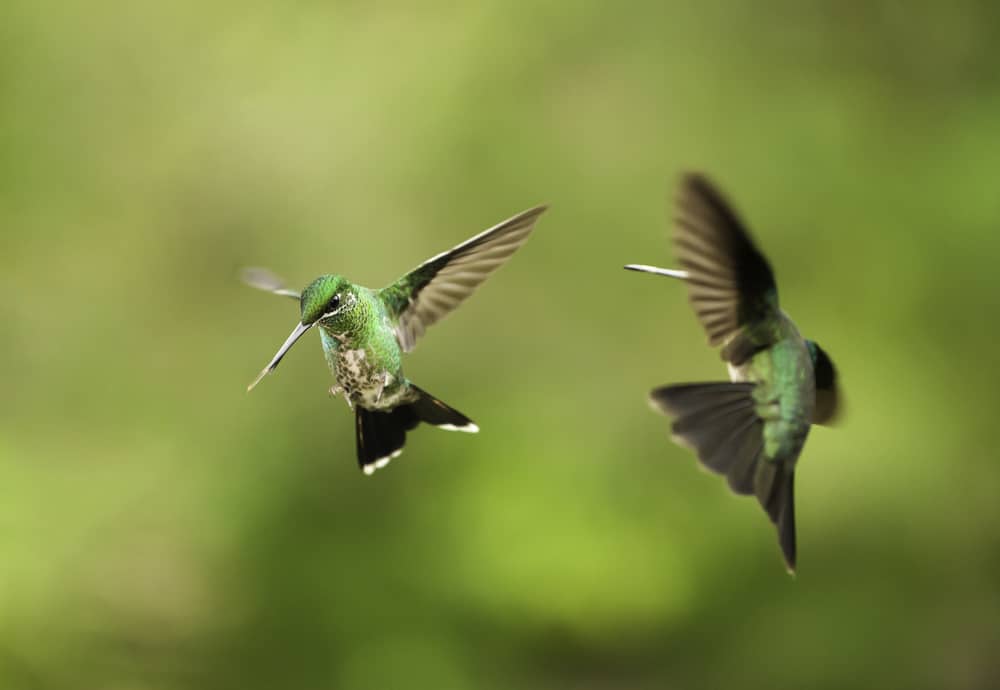Why do hummingbirds chase each other? If you have a hummingbird feeder, you might have seen them chasing each other around and wondered if there’s something you should do about it. Or, should you just allow it to happen?
Hummingbirds chase each other for a variety of reasons, from engaging in playful antics to asserting territorial dominance.
In this article, we’ll dive into more detail about the many reasons for this hummingbird behavior and if there is something you need to do about it.
Why Do Hummingbirds Chase Each Other?
Hummingbirds’ behaviors can be aggressive or playful, depending on the current situation. The Rufous Hummingbird and the Ruby-Throated Hummingbird are the more aggressive types of these species you may find in your yard.


So, why are hummingbirds so mean to each other? Typically, hummingbirds chase each other for various reasons, including:
- Territorial behavior around food sources
- Aggressive behavior around nesting areas
- Possessiveness over area females
- Playful chasing in courting situations
Some people believe their antics are less practical and actually, hummingbirds have hidden meanings. While the symbolism of these tiny fliers is fascinating, we’ll stick to scientific facts in this article.
1. Territorial Behavior Around Food Sources
Are hummingbirds territorial over feeders? Yes, these little creatures can exhibit territorial behaviors. If you notice that hummingbirds are chasing one another away from your feeder, this is an indication that they are aggressively protecting their food source especially when it is one that is particularly sugary.
Before a hummingbird takes chase, they will warn any intruders or other birds they feel pose a threat to their feeder. One of the first warnings is their hummingbird territorial sound, a high-pitched, fast-paced twittering or chattering.
If intruders do not back away, hummingbirds will try to appear larger and more intimidating by changing their stance. It will stretch and expand its tail feathers and wings while positioning itself facing the opponent and pointing its beak to show it is ready to fight if necessary.
Check out this fascinating video that delivers a real-time view of hummingbirds fighting over territory.
Male hummingbirds will also flare their gorget and neck feathers and flash their bright, colorful plumage to look bigger and more aggressive. Some hummingbirds will use all these tactics simultaneously when facing competition for food sources.
2. Aggressive Behavior Around Nesting Areas
You may wonder, are female hummingbirds territorial? Yes, if other birds get too close to a nesting area, these tiny birds can be highly territorial.
Check out this video of female fighting over a nest.
Additionally, the males will also step in to help protect these nests and any juvenile birds and their mates from intruders.
When it comes to the males, are hummingbirds territorial? Yes, males will also aggressively protect their area, which could include several females with nests and their food source. In addition, the male hummingbird will continuously defend his home turf from any other intruders who may threaten the food supply or pose harm to the females or the young.
So, do hummingbirds fight for territory? Yes, these small but mighty birds will compete for space for themselves and potential mates.
3. Possessiveness Over Area Females
Once a male claims his territory and food source, he can also be extremely possessive over the female hummingbirds in this area. Therefore, if any competitive males enter his environment, he will spring into action to chase them away, so they do not lure his females from him.
4. Playful Chasing in Courting Situations
Some chasing antics are not aggressive between birds but as a way to attract a mate and court them for breeding purposes. For example, rather than chasing off a female, the male will puff up its feathers, flash its brilliant colors and perform various dancing, diving, and chasing moves to attract attention.
Males will use one or more ways to engage females in courtship. Their diving method includes flying to extreme heights, then diving straight down in front of the female. Sometimes they can reach as much as 130 feet in the air. Before the male reaches the ground, he quickly changes trajectory, showing his skills and abilities to the potential mate.
Another playful way for males to entice females includes him flying around the female in a u-shape while she sits on a perch. He will use various twitters and whistling noises to grab her attention during this dancing display. If she accepts him as a suitable partner, she will join in the chase and allow him to mate with her.
Why Do Hummingbirds Chase One Another Away From the Feeder?
Besides the characteristic that hummingbirds are territorial by nature, why do they fight over feeders? This behavior stems from the fact that they are highly active and require adequate nectar from flowers to sustain them.
Consequently, they are extremely small, weighing only approximately three grams, and their rapid wing movement calls for an abundance of nourishment. So, when they find a food source, they protect it since another option may be too far away to reach.
An up-close and personal look at hummingbirds fighting over the feeder…
These chasing activities tend to be more common during the late spring and early summer weeks when it is breeding season. Males will be claiming territory and finding suitable mates, while females will build nests and lay eggs.
Another popular time you may notice more aggression from hummingbirds is in the fall. This season is when hummingbirds try to obtain as much food as possible before beginning their migration for the winter.
But, if you happen to have Rufous Hummingbirds in your yard, they can be territorial and aggressive throughout the seasons, even when other types are not.
Do Hummingbirds Kill Each Other?
With such territorial birds in your yard, you may question their aggressiveness. For example, do hummingbirds kill each other while protecting their area? Generally, even though hummingbirds may fight often, this behavior rarely results in injury or death.
That does not mean that killing each other does not happen because, on occasion, two highly aggressive males may fight until one becomes injured enough, causing death.
Active fighting hummingbirds will face each other in mid-air while pointing their beaks at their opponent. Then, they will use their beaks and talons as weapons to intimidate and try to inflict harm that will scare away the other.
In addition, they bump into each other while in mid-flight while defending themselves and attacking their rival. This behavior can cause significant damage to the birds and sometimes even death.
If you are concerned about hummingbirds fighting in your yard, there are steps you can do to help minimize or prevent it from happening.
How Do You Stop Hummingbirds From Fighting Over Feeders?
Now that you know how territorial hummingbirds can be when there is a food source, there are ways you can stop them from fighting over your feeders.
Use Multiple Single-Port Feeders
Since hummingbirds do not like to share, using a multi-port feeder can eliminate attracting excessive males to the one area that will fight over using your feeder. While males will share with females, they will chase other male hummingbirds away.
By including several single-port feeders, you can help a territorial hummingbird focus on its one food source while allowing other birds to claim the others as theirs. Often, yards with more feeders will be too much work for one male to try and maintain control over, so he will scale back his area and concentrate on those that are easier to handle.
Hang Several Feeders Strategically Spread Out in the Yard
If you have an abundance of hummingbird fights in your yard, you should consider hanging up several different feeders throughout your space. The key to this method is to spread them out into areas where they are not visible to other hummingbirds. This spacing will keep territorial fights to a minimum.
You can choose to hang one feeder in your front yard and one in the back yard so you can make multiple hummingbirds happy while discouraging them from fighting over food. Even if you have a dominant bully hummingbird who wants to control all of the feeders, it will take time for him to reach them if you space them out. This way, you give other hummingbirds a chance to fly in quickly to eat before the bully comes over to chase them away.
Remove Outside Threats
Some hummingbirds will fight over feeders more when there are outside threats present, like other bird species or predators.
If you notice a larger bird’s nest near the hummingbird feeder, try to relocate it to a different spot in your yard. Cat owners may see that their feline hangs around hummingbird feeders, making them more aggressive. If this is the case, place the feeder where your cat cannot bother them.
Remove the Perch
A territorial hummingbird will usually have his favorite spot where he can see the food source and all surrounding areas. This way, he has ample opportunity to spot any intruders so he can quickly defend his turf.
You can remove this perch if you know where your hummingbird bully hangs out often. Sometimes it will be a branch from a tree. Other times, it can be a cage around a tomato plant. By eliminating this lookout, he will have to relocate to find a new perch and may move on or reduce his aggression.
How To Get Hummingbirds to Share Feeders

Additionally, there is a way you can encourage hummingbirds to share feeders and minimize the instances of them chasing each other off and fighting.
Usually, when all the young hummingbirds are looking for food in the late summer, this can create problems. To encourage sharing, you can cluster multiple feeders together in one spot.
There are many food source possibilities this way, and the dominant male will tire himself out trying to protect each feeder. Eventually, he will retreat to only one or two and remain with those while allowing other hummingbirds to use other feeders.
How Can You Tell if a Hummingbird is Being Aggressive?
Although it may be challenging to differentiate between a territorial hummingbird and one that wants to attract a mate, some simple clues can indicate aggression. For example, while both situations will have a hummingbird look puffed up and have its feathers spread out, one clue is their body language.
If a hummingbird is trying to scare off an intruder or engage in a fight with another, it will be using its beak and talons to try and harm the other hummingbird. Males who want to attract a female do not use these while trying to grab their attention.
Another notable point in determining if a hummingbird in your yard is being aggressive is the sounds it makes. Yes, potential mates will sing for the females while dancing, but these actions are not as intense as a territorial hummingbird.
If two hummingbirds are emitting high-pitched, extreme noises while engaging in sudden movements, they are most likely fighting with one another.
Are Hummingbirds Territorial Towards Humans?
If the thought of an aggressive hummingbird scares you, you are not alone. These small yet mighty creatures are fast and look like they can do some damage if they want to. However, hummingbirds do not typically exhibit aggressive behaviors toward humans.
If you have a feeder for these pretty birds, they will typically associate you with a food source. Although these quick birds may fly right up to your face and hover, this is not a territorial action. If you begin to wave your hands around, they will surely fly off and seek shelter away from you instead of acting aggressively.
These birds are curious creatures and can remember human faces and places where they have food sources. They will return to human yards where they have food and shelter year after year. There are even reports of hummingbirds flying to humans and fluttering around their heads to alert them if the feeder is empty or unusable.
The Takeaway
Hummingbirds can be extremely aggressive birds and chase one another as they compete for food, mates, and territory. And, even though they are approximately three to four inches long, these tiny birds are not afraid of defending what they believe is theirs.
Hummingbirds can be entertaining to watch as they feast in your yard, but if you are afraid of aggression and fighting, you can help minimize these instances. Try using these methods to keep multiple males separate and encourage sharing so you can continue to enjoy these small creatures year after year.







